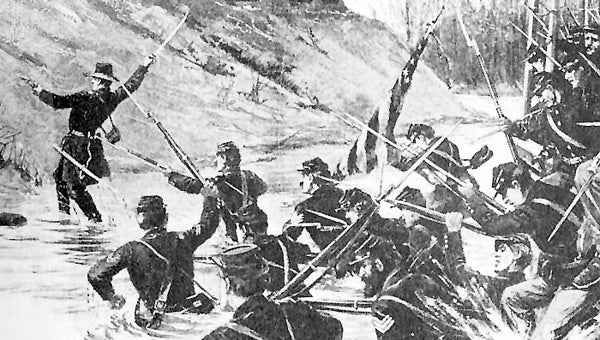Surprise attack!
Published 11:34 pm Thursday, April 18, 2013
To mark its 150th anniversary, through May 4, the Suffolk News-Herald will feature a multi-part series by Suffolk historian Kermit Hobbs detailing the 23-day Siege of Suffolk.
April 19, 1863
By Kermit Hobbs
Special to the News-Herald
Five days ago, Union gunboats had been pounded by Confederate shore batteries as they traveled up and down the Nansemond River. Eliminating the gunboat threat had opened an opportunity for Gen. Longstreet to take his army across the river and complete his circle around Suffolk. But now, that opportunity passed. During those five days, Union Infantry had worked diligently all night, every night to build defenses to resist a Confederate crossing. Working during the day was too dangerous because of sharpshooters from the other side.
The fact that Gen. Longstreet did not choose to cross the river proved that his foremost objective was to gather forage for Lee’s army. If he had had his men stretched around the town, it would have been much more difficult for him to make a quick exit if Lee were to call him back to Northern Virginia.
On the Union side, Lt. Roswell Lamson was still smarting from the drubbing his gunboats had taken at the hands of the Confederates. He wanted revenge, and he had tried twice to sneak a force of infantry across the river to capture the Hill’s Point Battery, also known as Fort Huger (pronounced “You-gee”), the strongest of the Rebel positions.
On the morning of the 19th, Lamson, Gen. George Getty, and Capt. Hazard Stevens, one of General Getty’s staff officers, observed Fort Huger from across the river and marveled at its naturally strong location. Lamson stated his belief that the fort could be captured from behind. Stevens added the suggestion that the attack would be most likely to succeed if it were done in broad daylight. The very boldness of the plan inspired all three men, and plans were quickly put into motion to make it happen. Getty and Stevens arranged the invading force; Lamson readied his gunboats.
At 5 p.m., 270 men from the 89th New York and the 8th Connecticut boarded the Stepping Stones a couple of miles upstream from Fort Huger. Canvas screens were erected on the converted ferry boat to conceal the soldiers huddled together on its deck. They knew that their errand was a long shot, and a failure would be costly, because they would be stranded on the enemy shore to be killed or captured.
The Stepping Stones led a little flotilla of gunboats down the river, all but the Stepping Stones blowing their whistles and drawing attention. The Confederates were expecting a fun afternoon at the shooting gallery.
About 300 yards upstream from Fort Huger, just before coming into full view of the fort, the Stepping Stones turned toward the enemy’s riverbank to unload its passengers. Unexpectedly, the boat hit a hidden piling and stuck fast in the mud. The rear end of the boat swung out into the river, jeopardizing any chance to surprise the Confederates. Capt. Stevens quickly jumped off the bow of the boat into the waist-deep water calling out, “Follow me, men!” The Union infantrymen quickly followed his example, holding their muskets and ammunition above their heads and out of the water. When the men were out of the water, two of the boat’s howitzers were rolled off and up the hill to support the infantry. Within minutes the entire force was swarming across the open plain, toward the rear of the fort.
The Confederates, realizing what was happening, managed to turn one of their cannons and fire a round of grapeshot into the approaching Yankees, killing two. It all happened in minutes. The Confederates, having no small arms to use against the attackers, surrendered quickly.
The surprise attack had worked perfectly. One hundred forty Confederate soldiers were captured in the attack, members of Stribling’s Battery and the 44th Alabama Infantry. Also captured were five cannons. It was a glorious victory.
Capt. Stevens was later awarded the Medal of Honor for leading the men off the boat when it ran aground.
The captured soldiers were whisked away to the Stepping Stones and carried back to Suffolk. The Yankees in Suffolk were surprised at the ragged appearance of the Rebel soldiers, but the local population cheered them as they were marched down the street. Even though they had lost the battle, they were still heroes!







